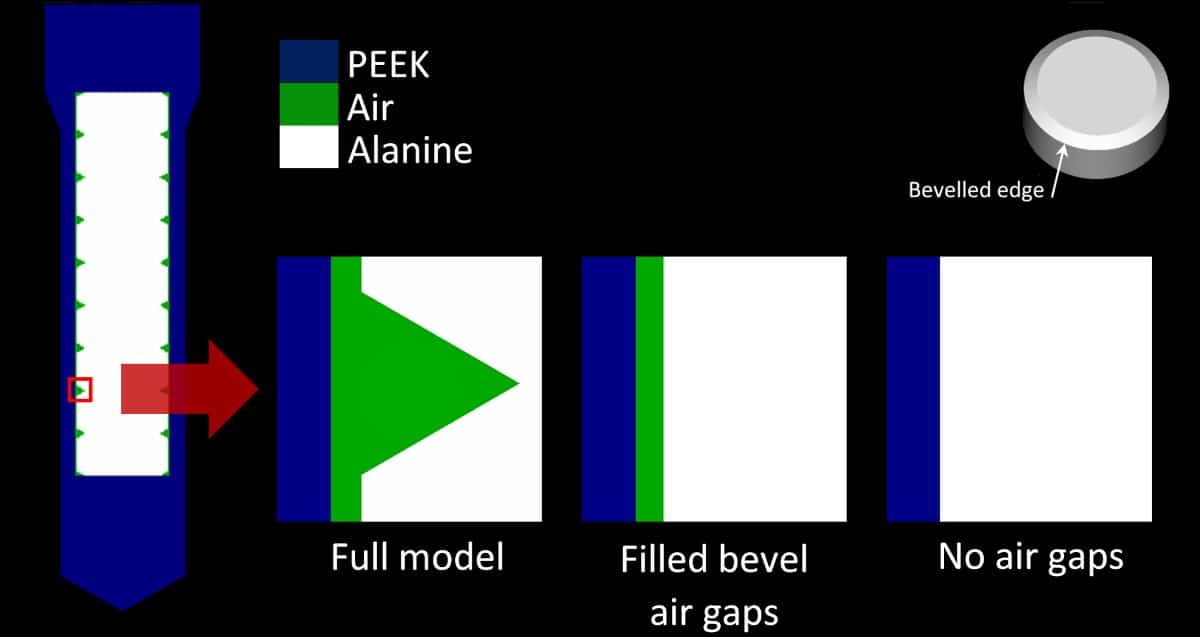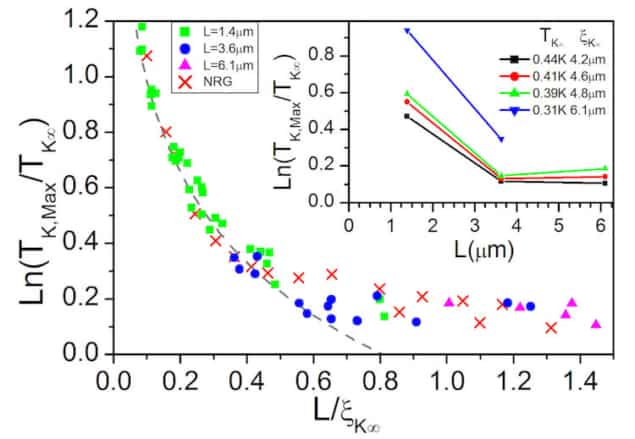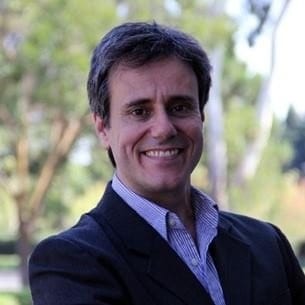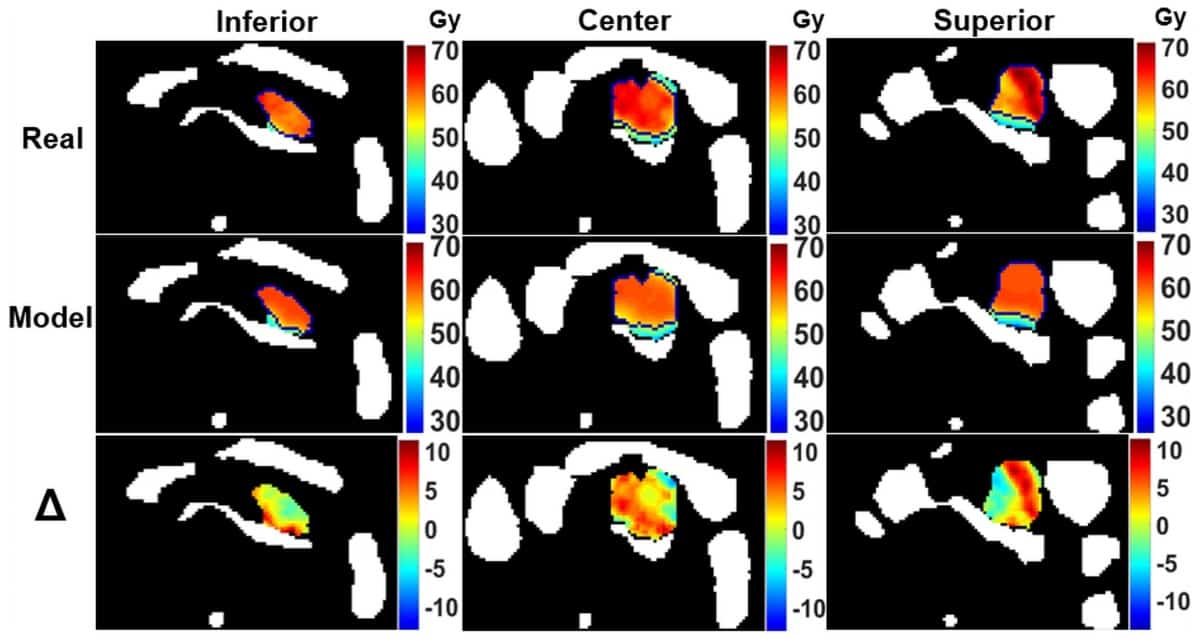The shimmering wings of certain butterfly species are well-known examples of “structural” colour – that is, colour produced by light-scattering nanostructures rather than by reflection from coloured pigments. Many of the most striking species are, however, rare and hard to breed, hindering efforts to study these nanostructures in more detail. Now researchers in the US have struck iridescent gold by breeding blue structural colour into a more common species – a result that also helped them identify the first gene known to be associated with structural colour.
“Often conversations about butterfly structural colour focus on structures with more elaborate shapes than typical scales,” says Rachel Thayer, a PhD student at the University of California, Berkeley and lead author of a paper about the work, which is published in eLife. “We are showing that simple, normally-shaped butterfly scales are also an important source of structural colour, which suggests that many butterfly species may have the same phenomenon.”
Studies using a combination of electron microscopy and spectrophotometry had previously identified several butterfly species that produce structural colour in the lower lamina of their wing scales, which are made from a polymer called chitin. But Thayer points out that extending these spectroscopic methods to the high-throughput, live visualization studies needed to tease out the genetic and evolutionary basis of structural colour is more difficult. A further complication is that the exotic butterfly species with the most elaborate iridescent patterns are hard to keep in captivity.
Breeding beauties
The breakthrough came about, in part, because of Edith Smith. The co-founder of the Shady Oak Butterfly Farm in north-central Florida has a soft spot for the common buckeye butterfly (Junonia coenia), and one day she spotted something different. “I saw some bright blue on the top edge of a buckeye’s wings and wondered if it would become more prevalent or brighter if I bred some with blue to others with blue,” she recalls.
In just 12 months, Smith succeeded in breeding buckeyes that were far bluer and shinier than the predominantly brown wildtype. Then, when a video of Smith and the blue buckeyes caught Thayer’s eye, the Berkeley evolutionary biology student thought, “These are really blue, they look iridescent, probably a structural colour, and in one of the best species [for laboratory research] – I’ve got to check these out!”

Thayer used helium-ion microscopy (HIM) to identify an increase in the thickness of lower lamina scales in blue patches on the specially-bred buckeyes. Her hunch about structural colour had been right. But she also wanted to know whether the rapid colour change caused by Smith’s selective breeding was relevant to natural evolution.
Adding colour the genetic way
By taking specimens from 10 closely-related buckeye and pansy species, Thayer matched the HIM structures identified in individual patches to their reflection spectra. It was exacting work. “Training my hands to dissect scales as thin as a soap-bubble wall, without breaking them – that was pretty hard,” she says.
Despite the fiddliness of the task, Thayer was able to show that, although many different pigments were present within the scale nanostructures, the greatest contributor to the range of iridescent colours across species was a structural element: film thickness. “The differences in lamina thickness between species indicate that one way structural colour has evolved is by tuning the thickness of this tiny film in each butterfly scale to produce different hues,” she says.
Finally, Thayer fitted a genetic piece into the puzzle. A group of researchers at Cornell University in New York had previously mutated a well-known butterfly pigment gene known as optix, and they were curious to know whether this gene might also play a role in creating structural colour. When they sent specimens to Thayer, she found that lamina thickness was responsible for their colour changes, too.

Nanoscale structures give some butterflies ‘ultra-black’ wings
“Optix is the first gene we know of that can change the shape of a photonic structure in butterflies,” says Thayer, adding that she is excited by the possibility of investigating how nanostructures develop, and of finding other genetic clues. Further down the line, she says that understanding these elements could inspire more efficient ways of producing photonics devices such as solar panels and displays.
Extending the work
Pete Vukusic, a biophotonics expert at the University of Exeter, UK, who was not involved in the research, calls it “a lovely piece of ‘evo-devo’ [evolutionary development] work” and says he is intrigued by some of Thayer’s spectral measurements. “Butterflies appear to use ultraviolet scattering extensively, so I’d like to see [the measurements] extended into the near ultraviolet range, as that would help to tell a more complete story with respect to functionality.”
Although Thayer was unable to measure ultraviolet scattering with her current set-up, she says that Fresnel’s classical thin-film equations for reflectance suggest that some species do indeed scatter ultraviolet light from their scales. Her next steps are to find out whether optix or other genes are responsible for the newly-gained blueness of Smith’s selectively-bred buckeyes. As for Smith, she has an eye on some other butterfly traits, so who knows what scientific gold she’ll strike in her future experiments.




 Mark Elo is the US general manager for Tabor Electronics. He began his career as a design engineer in Hewlett-Packard’s Microwave Division in 1990 and has since held various senior engineering and management positions at Agilent Technologies, Anritsu, Gigatronics and Keithley Instruments in R&D, marketing and business development. Elo has almost 30 years of test and measurement experience in microwave instrumentation, especially with respect to signal simulation and spectrum analysis – specializing in product definition and product realization of RF and microwave-frequency synthesis and analysis platforms. He has also held the chair for the AXIe marketing committee, participated in wireless standards and has published multiple articles.
Mark Elo is the US general manager for Tabor Electronics. He began his career as a design engineer in Hewlett-Packard’s Microwave Division in 1990 and has since held various senior engineering and management positions at Agilent Technologies, Anritsu, Gigatronics and Keithley Instruments in R&D, marketing and business development. Elo has almost 30 years of test and measurement experience in microwave instrumentation, especially with respect to signal simulation and spectrum analysis – specializing in product definition and product realization of RF and microwave-frequency synthesis and analysis platforms. He has also held the chair for the AXIe marketing committee, participated in wireless standards and has published multiple articles.


